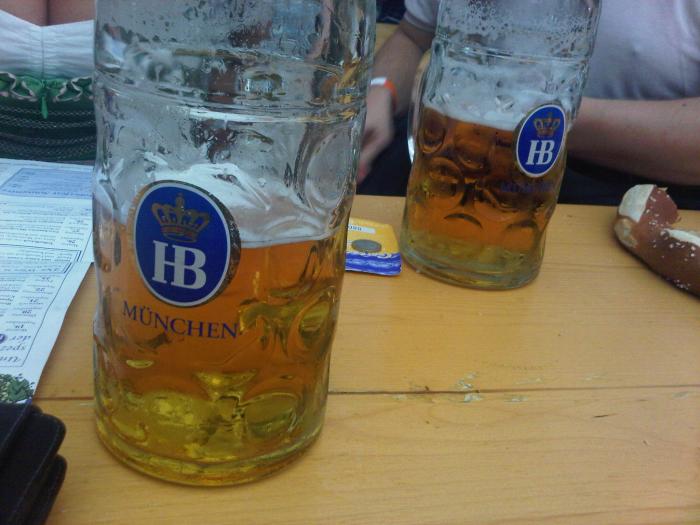Hi,
I brewed a Maerzen (Oktoberfest beer) last September using the following recepie:
Gravity: ca. 1046 (12% Plato)
Batch size: 5.28 gallon (20 l)
Grain bill:
5.51 lb (2500 g) Pilsner malt
4.40 lb (2000 g) Vienna malt
Yeast: Safalager S-23
Water:
4.22 gallon (16 l) mashing
3.96 gallon (15 l) sparging? (I don`t know the correct word for it. In german it is "Nachguss")
Hop:
1.34 oz (38 g) Hallertauer Tradition (7.1 % Alpha) at 90 min.
0.67 oz (19 g) Hallertauer Tradition (7.1 % Alpha) at 15 min.
Mash at 95°F (35°C)
Rest at 131°F (55°C): 15 minutes
Rest at 147°F (64°C): 35 minutes
Rest at 161°F (72°C): 20 minutes
Rest at 172°F (78°C): 20 minutes
Sparge at 172°F (78°C)
Boil time 90 minutes
The beer itself turned out slightly red and tasted really nice.
I hope this helps.
Cheers
Martin
Edit: This won`t be like an Oktoberfest beer that you`ll be getting at the Wiesn because of the color. Wiesn beer are more golden in color.
It absolutely helps. I'm loving this discussion.
I have to say, the Oktoberfest bug has bitten me hard. I have a brown ale that I am really proud of, but it is what it is. I have a big Irish red recipe that I made that again, I really like... and I might tweak very slightly, but that style is pretty well defined. Once I'm certain that the beer is what I want, I'll simply brew the same recipe again.
Oktoberfest/Marzen, on the other hand, has just so much room to play with. Let's say, for the sake of fun, that this malt bomb I'm planning to brew turns out to be some amazing, gold medal winning beer. I'm on the cover of BYO. Women want to be with me, men want to be me....
Wait, where was I?
So I brew this amazing beer. Great! While I'd be thrilled, on the other hand, it doesn't matter... I'm also wanting to try my hand at one of the lighter in color and flavor versions out there. Look at Stonehands, who is on something like attempt #5 to capture that perfect "tent beer", and I can personally attest that the guy brews amazing beer.
I see quality beers with grains bills that are mostly Vienna, or mostly Munich, or mostly pilsner. I see grain bills with specialty grains, I see grain bills with two base grains and nothing else. Different yeasts act differently, different mash schedules, the list goes on.
Is there another beer with this much of an acceptable range of outcomes?
I get the feeling that I'll always have one interpretation of this style on hand.


![Craft A Brew - Safale S-04 Dry Yeast - Fermentis - English Ale Dry Yeast - For English and American Ales and Hard Apple Ciders - Ingredients for Home Brewing - Beer Making Supplies - [1 Pack]](https://m.media-amazon.com/images/I/417FujUfrWL._SL500_.jpg)

























































